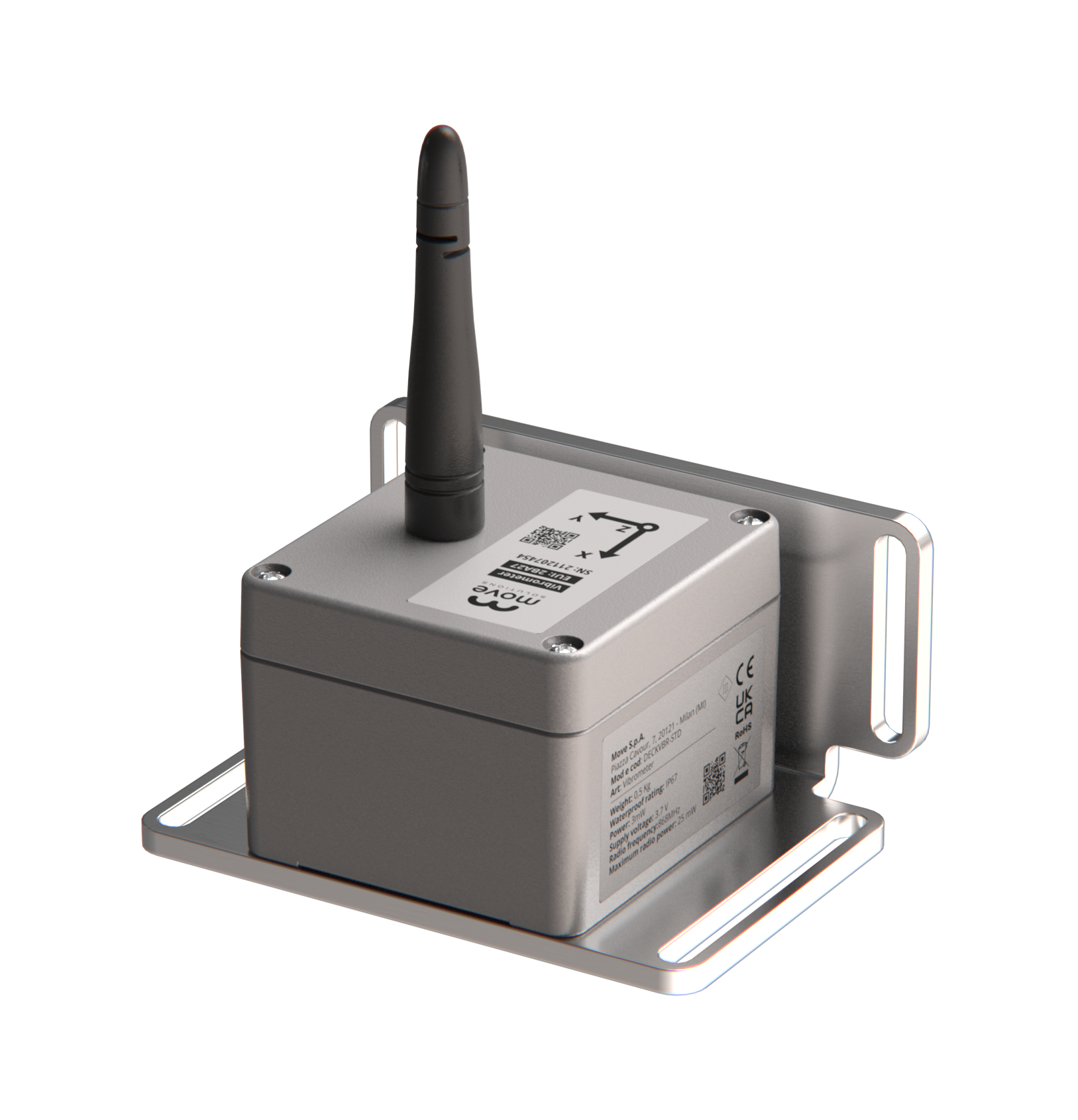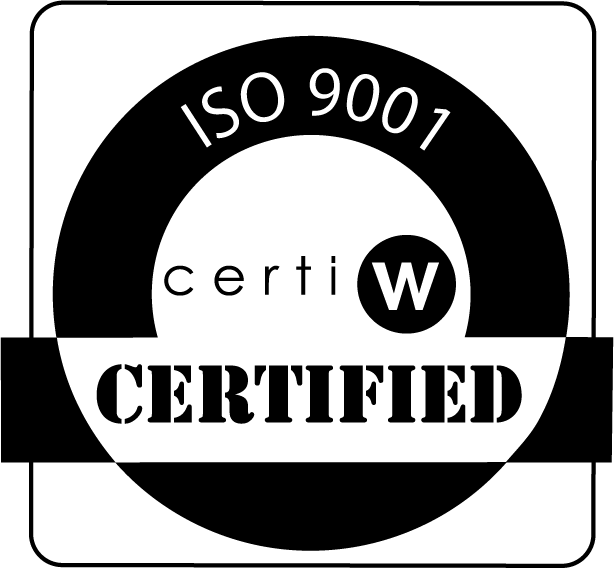Vibrometer
The Vibrometer is a triaxial, battery-powered device engineered to monitor structural vibrations through particle velocity measurements. Based on MEMS technology, it provides information about vibrational amplitude and dominant frequency across three axes. Fully wireless and LoRaWAN-enabled, it operates autonomously and transmits time-synchronized data to the MyMove platform for advanced analysis. Ideal for working with vibration monitoring standards such as DIN 4150 and UNI 9916, the sensor supports long-term deployments in infrastructure and construction environments where vibration must be assessed precisely.
Everything you need, built In
All Move Solutions sensors share the same foundation: precision, reliability, and seamless integration.
Long-range, low-power data transmission ideal for remote and large-scale sites.
Multi-year operation with adjustable sampling and transmission settings.
Configure settings, calibrate sensors, and manage alarm thresholds, all in one platform.
Built for reliable use in harsh environments.
One device. Real-time control.
Quantifies vibration velocity and dominant frequencies — no FFT post-processing required.
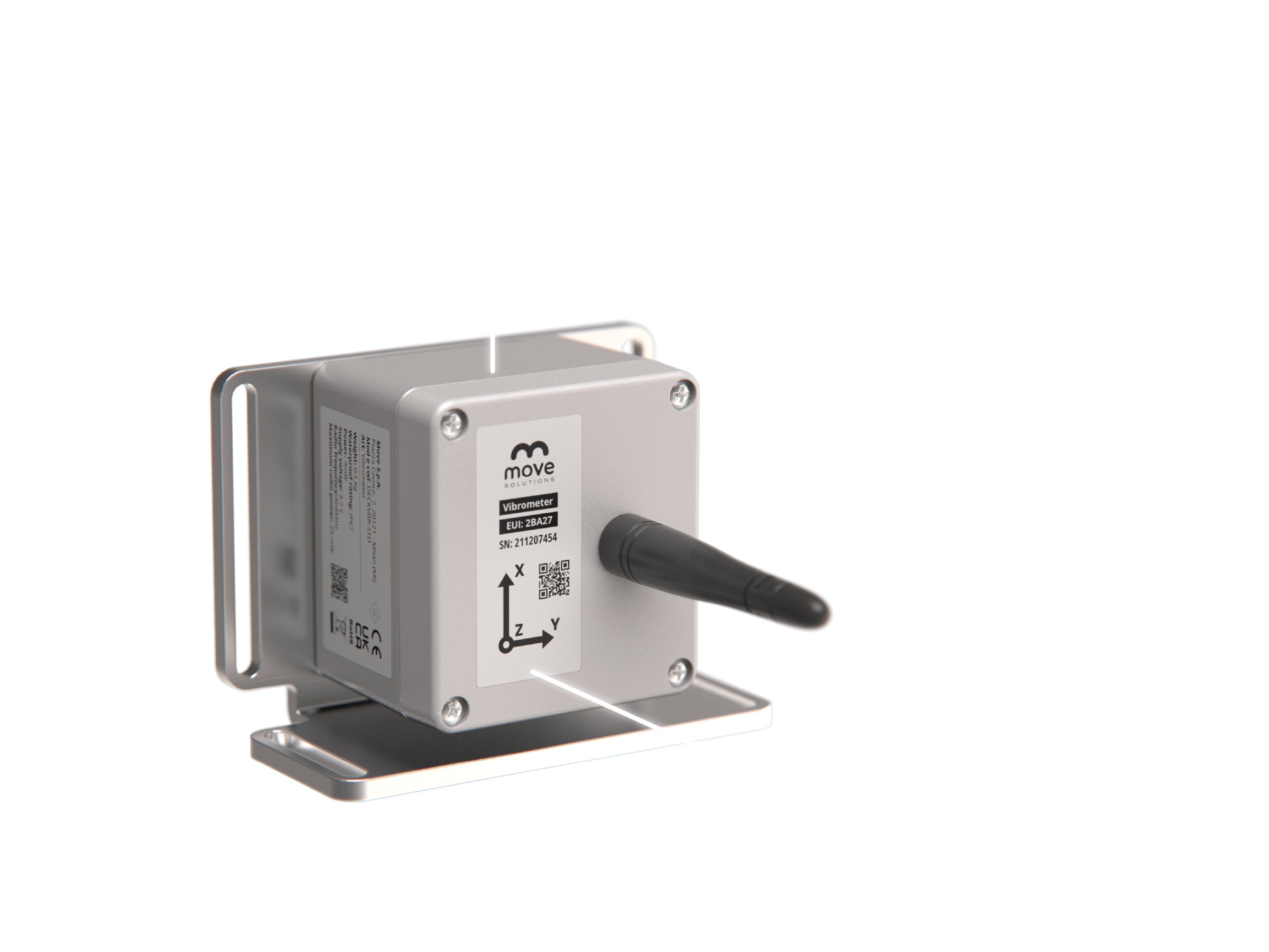
Triaxial velocity measurement
Performs real-time acquisition of velocity components along three orthogonal axes with high resolution and bandwidth of 1-100 Hz.
Programmed and event-triggered acquisition
Programmed mode: The sensor divides time into windows according to the selected cadence. Within each window, it
continuously monitors and tracks velocity, and once the window has elapsed, it transmits the data to the server.
Event-triggered mode: captures and stores vibration events exceeding configured threshold. Each acquired event includes, for each axis, the peak velocity value and the detected dominant frequency, as well as the temperature.
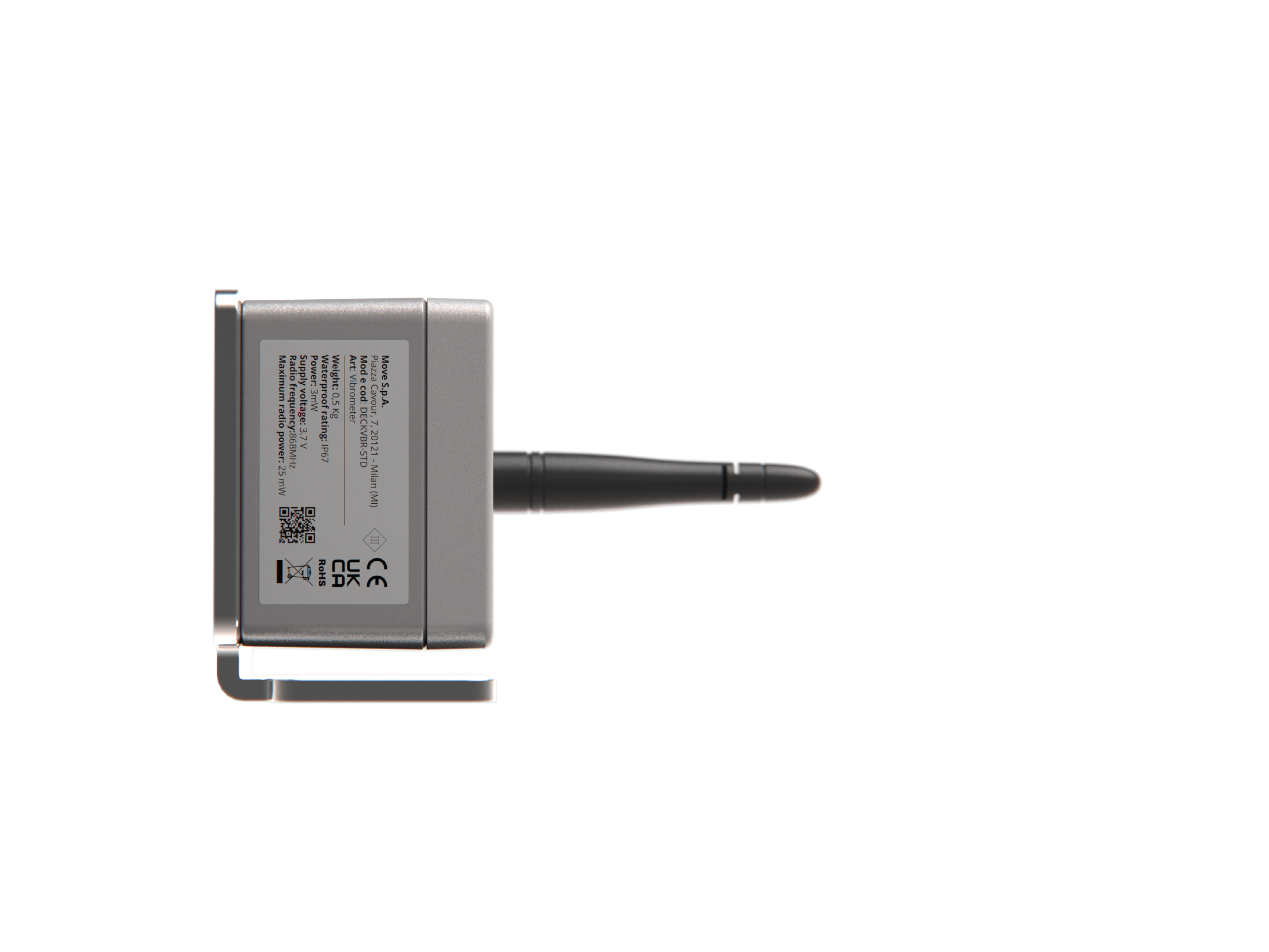
Fully autonomous operation
Battery-powered and wireless, the sensor is ideal for deployment in remote or difficult-to-access environments, minimizing installation effort.
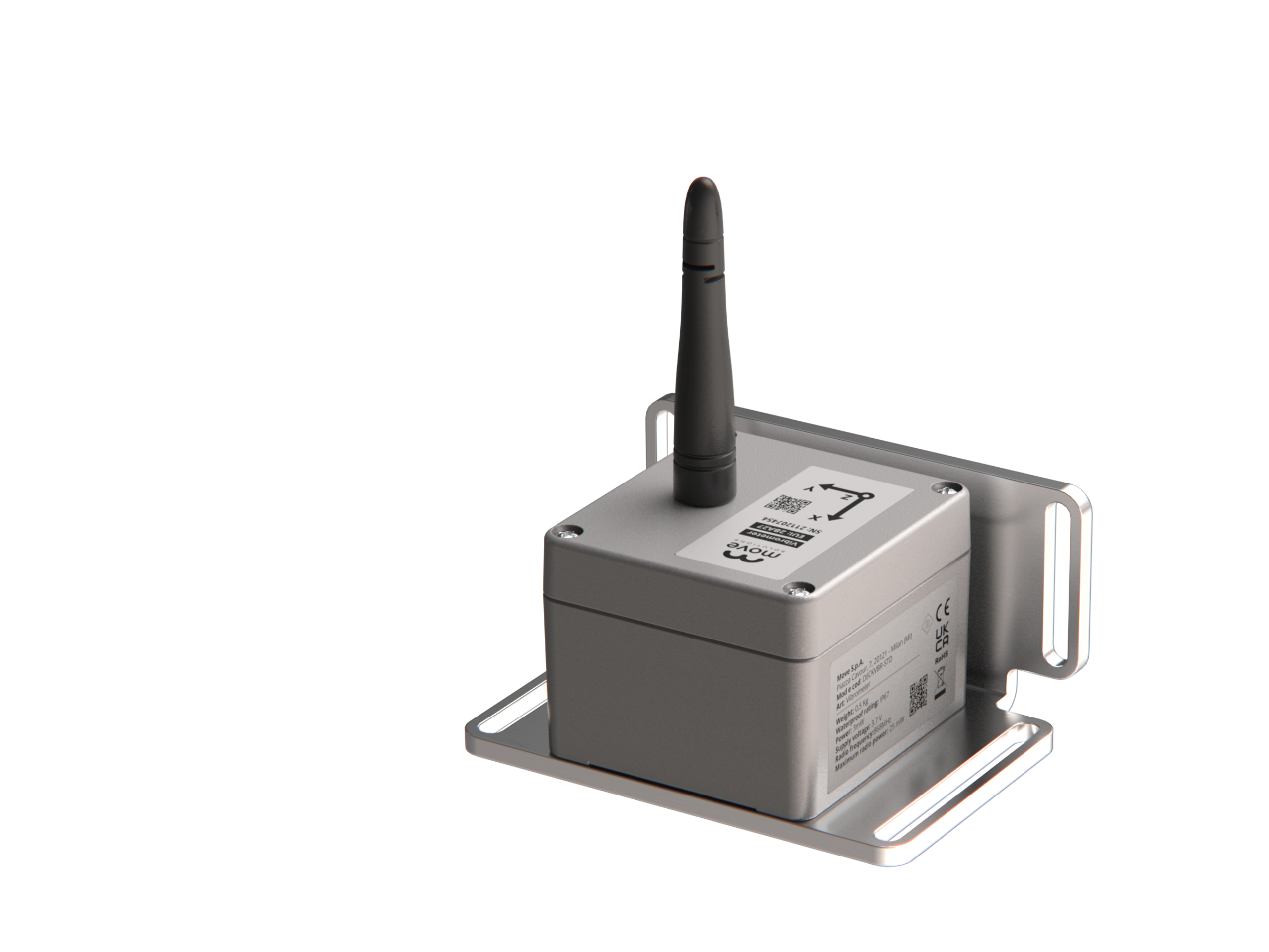
Standards-aligned monitoring
Supports vibration monitoring and provides the parameters used by standards such as DIN 4150, UNI 9916, BS 7385, and RI8507.
What this sensor measures
Triaxial velocity
Vibration velocity (mm/s or inch/s) along X, Y, Z axes.
Peak frequency
Maximum vibration frequency per axis per event.
Temperature
Logged with every acquisition for environmental correlation.
Available add-ons
Technical specifications
Measurement technology
MEMS triaxial sensor
Resolution
0.003 mm/s
Range
±100 mm/s
Sample rate
512 Hz
Acquisition modes
time-based or threshold-based
Time synchronization (for timestamps)
±1 s
Communication
LoRaWAN Sub-GHz
Local storage
2,000 acquisitions
Power
1x 3.6V LiSOCl₂ “D” battery, 19Ah
IP rating
IP67
Size
75 × 80 × 57 mm
Weight
1.1 kg
Material
GD-AlSi12 aluminum alloy
Operating temp
–40 °C to +85 °C
For detailed information about
Vibrometer
capabilities, check the download datasheet section.
Read your data, your way.

Use MyMove for real-time insights
Connect your sensors and devices to MyMove and access the full power of the platform:
real-time dashboards, alarms, automated PDF reporting, remote system control, and advanced tools for structural health monitoring.
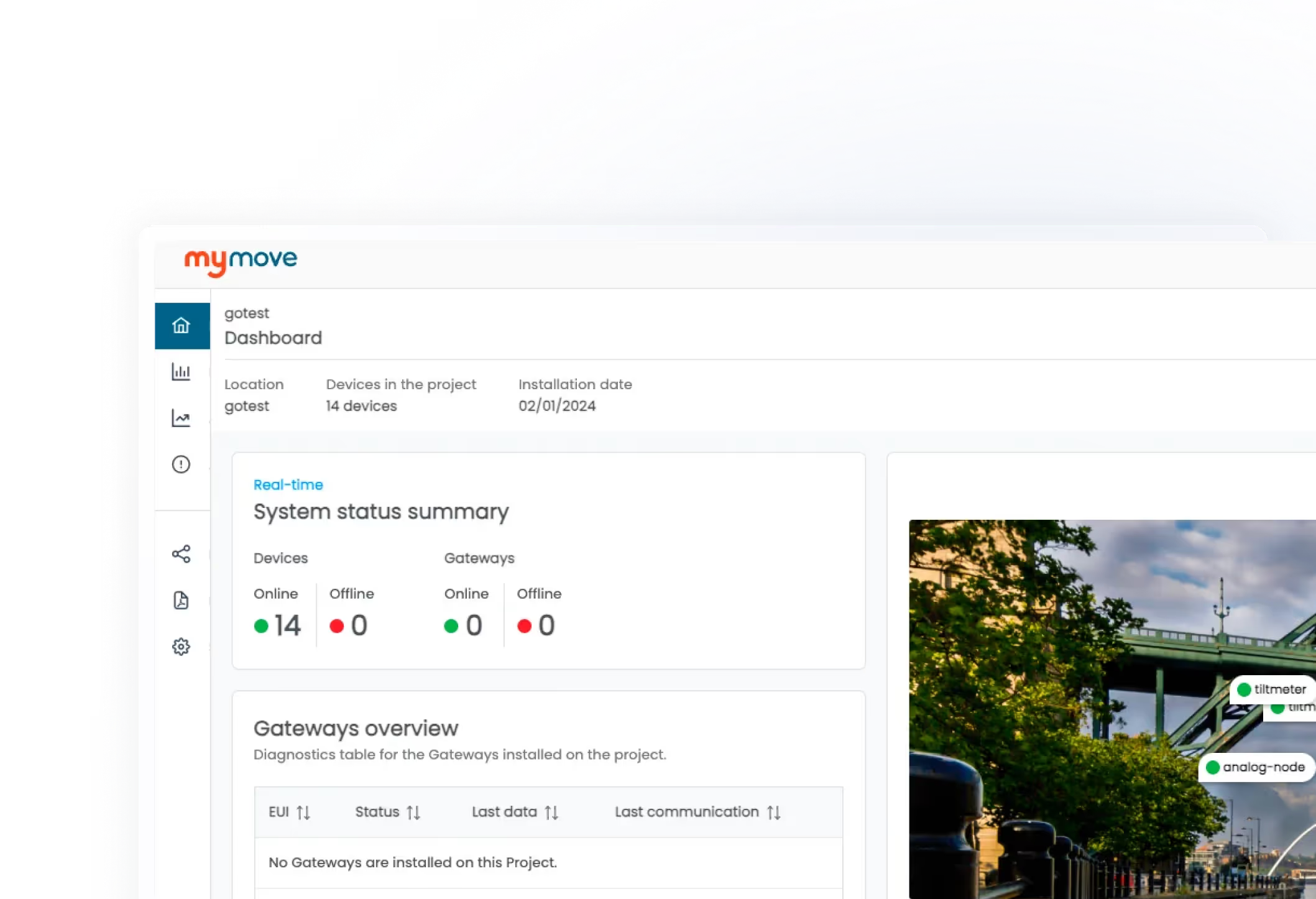
Integrate Move sensors via API
Use our API to access real-time and historical sensor data, configure devices remotely, and integrate everything into your SaaS, BIM model, or custom workflow.
Frequently asked questions
Find quick answers to common questions about our device and technology.
Didn’t find what you were looking for? Contact us—we’ll help you clarify any doubts.
The Vibrometer performs high-resolution triaxial vibration monitoring by measuring particle velocity (PPV and PCPV), dominant frequencies, and peak amplitudes on each axis. It uses a MEMS accelerometer internally and integrates its output to provide velocity readings with a resolution of 0.0015 mm/s and a range up to ±100 mm/s. The device supports multiple standards including DIN4150-3, UNI 9916, and BS 7385, making it suitable for structural, geotechnical, and environmental applications.
Two acquisition modes are available: Time-triggered, which sends data at fixed intervals (e.g. every 1, 2, or 5 minutes), and Threshold-triggered, which records data only when a defined velocity threshold is exceeded. In both cases, each acquisition includes the PPV, peak frequency, and amplitude per axis, plus temperature. Up to 2000 events can be stored locally for download via serial connection.
Proper installation requires aligning the device’s axes with the structural axes of interest. The Z-axis (antenna side) must always point upward and be as parallel as possible to the gravitational axis. The mounting plate allows flexible orientation, and screws and anchors are included for fixing to walls, ceilings, or floors. Consistent orientation across devices is crucial for valid comparisons across multiple sensors.
Data is transmitted via LoRaWAN using the 868 MHz or 915 MHz ISM band, with a nominal range of 1 km line-of-sight to the nearest gateway. Transmission includes timestamped event parameters and is optimized for low energy consumption. For maximum range and signal quality, correct antenna alignment and installation away from electromagnetic interference are essential.
Battery life varies depending on acquisition cadence and signal quality but typically ranges from 1 to 1.5 years. The Vibrometer uses a 3.6V LiSOCl₂ D-cell (EVE ER34615EHR2). Battery replacement requires opening the sealed enclosure, which voids the warranty unless authorized. For devices still under warranty, Move Solutions recommends contacting support before intervention.
Recommended sensors
Move Solutions offers high-precision, low-power sensors for structural, geotechnical, and environmental monitoring.
Request a tailored quote for your monitoring needs
Get a customized quotation based on your project specifications — from sensor selection to platform configuration and deployment support.
Request a quote now




